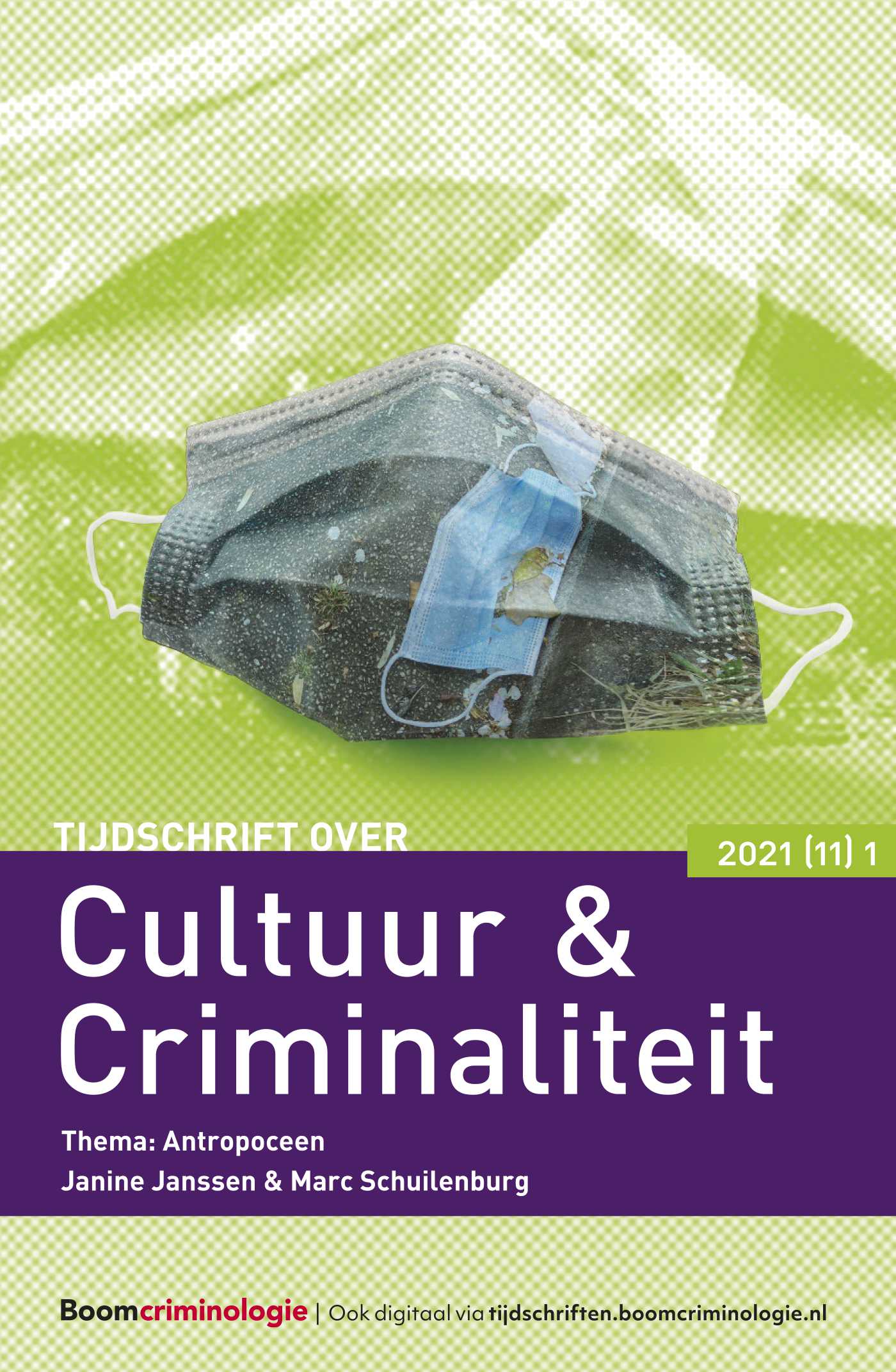|
Art crime, related to the existence of hidden art, appears in the legal and illegal art market. In the criminal ‘artopolis’ especially iconoclasm, forgeries and looting are longstanding phenomena. Today they are subject to the debate on art restitution. |


Tijdschrift over Cultuur & Criminaliteit
Meer op het gebied van Criminologie en veiligheid
Over dit tijdschriftMeld u zich hier aan voor de attendering op dit tijdschrift zodat u direct een mail ontvangt als er een nieuw digitaal nummer is verschenen en u de artikelen online kunt lezen.
| Artikel |
|
| Trefwoorden | art crime, hidden art, forgeries, looting, restitution |
| Auteurs | Marc Cools en Dina Siegel |
| SamenvattingAuteursinformatie |
| Artikel |
Vernieling en plundering als iconoclasme en bron voor illegale handel in antiquiteiten |
| Trefwoorden | iconoclasm, looting, antiquities, illicit antiquities trade, Islamic State |
| Auteurs | Mathias Desmet |
| SamenvattingAuteursinformatie |
|
During the conflict in Syria and Iraq, Islamic State demolished and looted countless cultural heritage sites and the statues therein, as well as archaeological sites and museums. These acts of iconoclasm, broadly shown in propaganda videos, were aimed at erasing the cultural identity of the population. Additionally, the destruction and looting were also a means to obtain antiquities that could be sold in order to bring in revenues. This article tries to explain the iconoclasm and illicit antiquities trade constructed by Islamic State and how they were related. |
| Artikel |
Nico Gunzburg en het ‘Moskou-Archief’ |
| Trefwoorden | Nico Gunzburg, freemasonry, Einsatzstab Reichsleiter Rosenberg, Moscow-archive, restitution |
| Auteurs | Marc Cools |
| SamenvattingAuteursinformatie |
|
In 1938, Nico (or Niko) Gunzburg founded the Institute of Criminology at Ghent University. |
| Artikel |
The Belgian debate on restitution since 2018A perspective on the political acts shaping |
| Trefwoorden | restitution of cultural heritage, Belgium, decolonisation, return |
| Auteurs | Yasmina Zian |
| SamenvattingAuteursinformatie |
|
This article analyses political discourses in the light of the vocabulary and suggestions contained in the parliamentary resolutions proposed in 2019 dealing with the restitution. It appears that the discourses are committed but the developed suggestions are mild. This apparent contradiction can be explained through Hanna Pitkin’s work on political representation. Using this analysis, two reflections are proposed in the conclusion: one on the Belgian case with regards to the European context and the other on the current expectations of society. |
| Artikel |
Misdaad tegen de kunst?De Russische avant-gardewereld |
| Trefwoorden | avant-garde, art smuggling, clandestine collections, criminalisation, forgeries |
| Auteurs | Dina Siegel |
| SamenvattingAuteursinformatie |
|
The Russian avant-garde world serves as an empirical example of the embeddedness of criminal actors (fraudsters, smugglers, thieves) in the legal art market of curators, collectors and museum directors. The article discusses various dilemmas regarding the interpretation of criminal activities in the art world. Is the smuggling of ‘forbidden art’ from the Soviet Union a patriotic act or a crime? Why do world-famous museums exhibit forgeries? What are the financial and judicial consequences of a lack of consensus between art experts? |
| Essay |
Voor roem of fortuinVervalsingen van archeologische objecten |
| Trefwoorden | archaeological forgery, James Ossuary, Shroud of Turin, Piltdown Man Skull, Archaeoraptor Fossil |
| Auteurs | Noah Charney |
| SamenvattingAuteursinformatie |
|
This paper looks at a selection of famous forgeries of archaeological objects – the James Ossuary, the Shroud of Turin, the Piltdown Man Skull and the Archaeoraptor Fossil – to consider how these artefacts were falsified for personal benefit, whether in terms of fame or finance. The Shroud of Turin was identified as a forgery as early as 1389, and yet the value in terms of income from pilgrims was such that it continued to be displayed and venerated. The James Ossuary was forged for profit and notoriety, to gain renown and then to sell. The Piltdown Man Skull was one of many alleged forgeries by a man who sought renown by finding the ‘missing link’ that proved the Darwinian theory of evolution from ape to homo erectus. The same motivation drove the scientists who tried to pass off the Archaeoraptor Fossil as the ‘missing link’ that proved the relation of dinosaurs and birds. |
| Voorbij de horizon |
Bauhaus, moderniteit en de Unrechtstaat |
| Trefwoorden | Bauhaus, National Socialism, architecture, Bauhäusler |
| Auteurs | Martina Althoff |
| SamenvattingAuteursinformatie |
|
The article discusses the connection between Bauhaus, a modern art and architecture school founded in 1919, and National Socialism. The central question is to what extent modern ideas about art and culture, architecture and modern life went hand in hand with the emerging and assertive National Socialist ideas. In the review of an art and architecture collection, activities of famous Bauhaus figures are traced in order to discuss the Bauhaus myth. Accordingly, it must be concluded that neutrality of art and architecture does not exist and Bauhaus modernity was not incompatible with National Socialism. |
| Discussie |
Het verdienmodel drugs en de vooruitziende blik van de commissie-HulsmanKort verhaal over een Inquisitie |
| Auteurs | Peter Cohen |
| Auteursinformatie |

